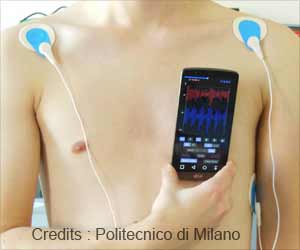Providing sustainable electrical power to biomedical implants without performing any major invasive battery-replacement surgeries is a challenge. A new method uses active photonic wireless system to power medical implants.

‘Using active photonic power transfer can secure enough electrical power in the body to keep the medical implants functioning. This would lead to the development of new types of medical implants with diverse functions and high performance.’
Read More..




Most of these medical devices, including the pacemaker, require a constant source of energy to operate. Naturally, this causes some limitations: batteries, which provide an energy source for the implants, have a finite lifespan. Once the battery power gets exhausted, there is no other option but to perform invasive surgery to replace the battery, which poses a risk of surgical complications, such as bruising, infections, and other adverse events.Read More..
In a new study published in PNAS, a research group from South Korea, led by Professor Jongho Lee at GIST, dug deeper to find a solution: they attempted to develop a strategy to recharge the internal battery of devices without invasive surgery or risky penetrative procedures.
Prof Lee explains, "One of the greatest demands in biomedical electronic implants is to provide a sustainable electrical power for extended healthy life without battery replacement surgeries." Although this is a tricky concept, Prof Lee believes that the answer lies in the "translucency" of living tissue.
This can be explained through an interesting phenomenon. When you hold your hand up to a powerful light, you can see that the edges of your hand glow as the light passes through your skin. Taking inspiration from this, Prof Lee and his team developed an "active photonic power transfer" method, which can generate electrical power in the body.
This novel system consisted of two parts: a skin-attachable micro-LED source patch--which can generate photons that would penetrate through the tissues--and a photovoltaic device integrated into a medical implant--which can capture the photons and generate electrical energy. This system provides a sustainable way of supplying the medical implant device with enough power to avoid any high-risk replacement methods.
Advertisement
When the scientists tested this power system in mice, they found that this wireless power transfer system is easy to use, regardless of weather, clothes, indoor or outdoor conditions, etc. The light photons emitted from the source patch successfully penetrated live tissues in mice and recharged the device in a wireless and convenient manner.
Advertisement
Source-Eurekalert










